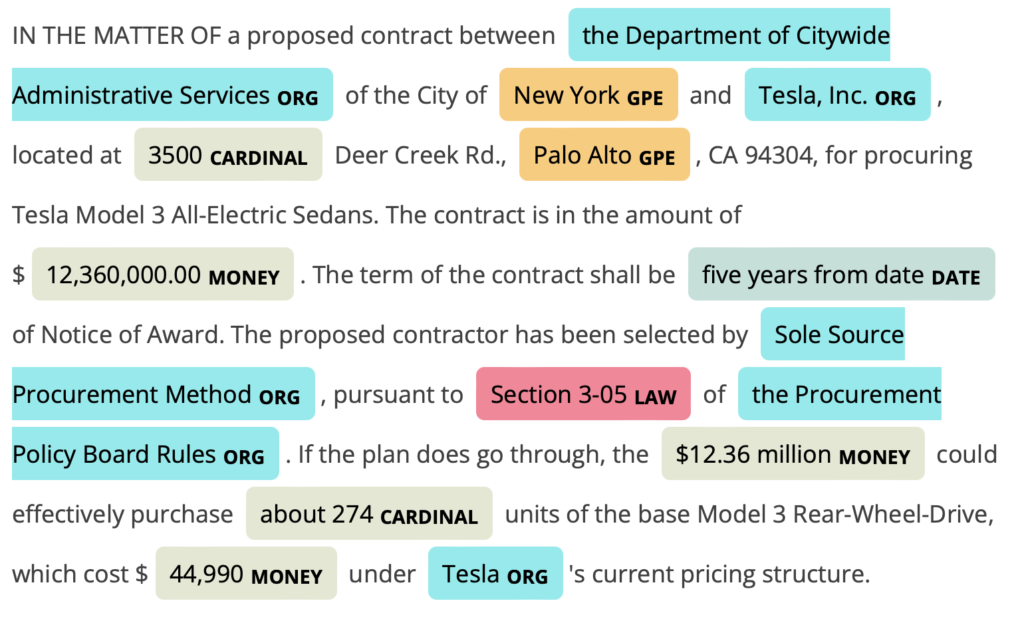
Natural Language Processing (NLP)
Natural Language Processing (NLP) is a subfield of artificial intelligence (AI) enabling computers to understand, interpret, and generate human language. Discov...

Part-of-Speech Tagging (POS tagging) is a pivotal task in computational linguistics and natural language processing (NLP). It involves assigning each word in a text its corresponding part of speech, based on its definition and context within a sentence. The main objective is to categorize words into grammatical categories such as nouns, verbs, adjectives, adverbs, etc., enabling machines to process and understand human language more effectively.
Part-of-Speech Tagging (POS tagging) is a pivotal task in computational linguistics and natural language processing bridges human-computer interaction. Discover its key aspects, workings, and applications today!") (NLP). It involves assigning each word in a text its corresponding part of speech, based on its definition and context within a sentence. The main objective is to categorize words into grammatical categories such as nouns, verbs, adjectives, adverbs, etc., enabling machines to process and understand human language more effectively. This task is also referred to as grammatical tagging or word-category disambiguation, and it forms the backbone of various advanced linguistic analyses.
Before delving deeper into POS tagging, it’s essential to understand some fundamental word categories in English:
POS tagging is crucial for enabling machines to interpret and interact with human language accurately. It serves as the foundation for various NLP bridges human-computer interaction. Discover its key aspects, workings, and applications today!") applications, including:
Consider the sentence:
“The quick brown fox jumps over the lazy dog.”
After applying POS tagging, each word is labeled as follows:
This labeling provides insights into the grammatical structure of the sentence, aiding in further NLP tasks by revealing the relationships between words.
Several approaches exist for part-of-speech tagging, each with distinct advantages and challenges:
Rule-Based Tagging:
Statistical Tagging:
Transformation-Based Tagging:
Machine Learning-Based Tagging:
Hybrid Approaches:
POS tagging plays a vital role in developing AI systems that interact with human language, such as chatbots and virtual assistants. By understanding the grammatical structure of user inputs, AI systems can provide more accurate responses, enhancing user interaction. In AI automation, POS tagging aids tasks like document classification, sentiment analysis, and content moderation by offering syntactic and semantic insights into the text.
Part-of-Speech (POS) Tagging is a fundamental process in Natural Language Processing (NLP) that involves labeling each word in a text with its corresponding part of speech, such as noun, verb, adjective, etc. This process aids in understanding the syntactic structure of sentences, which is crucial for various NLP applications like text analysis, sentiment analysis, and machine translation.
Key Research Papers:
Method for Customizable Automated Tagging
This paper by Maharshi R. Pandya and colleagues addresses the challenges of over-tagging and under-tagging in text documents. The authors propose a tagging method using IBM Watson’s NLU service to generate a universal set of tags applicable to large document corpora. They demonstrate the effectiveness of their method by applying it to 87,397 documents, achieving a high tagging accuracy. This research highlights the importance of developing efficient tagging systems to manage large-scale text data.
Read more
A Joint Named-Entity Recognizer for Heterogeneous Tag-sets Using a Tag Hierarchy
Genady Beryozkin and his team explore domain adaptation in named-entity recognition with multiple heterogeneously tagged training sets. They propose utilizing a tag hierarchy to learn a neural network that accommodates different tag-sets. Their experiments show improved performance in consolidating tag-sets, highlighting the benefits of a hierarchical tagging approach.
Read more
Who Ordered This?: Exploiting Implicit User Tag Order Preferences for Personalized Image Tagging
Amandianeze O. Nwana and Tsuhan Chen investigate the role of tag order preferences in image tagging. They propose a new objective function that considers users’ preferred tag orders to enhance automated image tagging systems. Their method shows improved performance on personalized tagging tasks, emphasizing the impact of user behavior on tagging systems.
Read more
Part-of-Speech Tagging (POS tagging) is the process of assigning each word in a text its grammatical category, such as noun, verb, adjective, or adverb, based on its definition and context. It is foundational for NLP tasks like machine translation and named entity recognition.
POS tagging enables machines to accurately interpret and process human language. It underpins applications like machine translation, information extraction, text-to-speech conversion, and chatbot interactions by clarifying the grammatical structure of sentences.
The primary approaches include rule-based tagging, statistical tagging using probabilistic models, transformation-based tagging, machine learning-based methods, and hybrid systems that combine these techniques for higher accuracy.
Challenges include handling ambiguous words that can belong to multiple categories, idiomatic expressions, out-of-vocabulary terms, and adapting models to different domains or text types.
Start building smarter AI solutions using advanced NLP techniques like Part-of-Speech Tagging. Automate language understanding with FlowHunt.

Natural Language Processing (NLP) is a subfield of artificial intelligence (AI) enabling computers to understand, interpret, and generate human language. Discov...

Named Entity Recognition (NER) is a key subfield of Natural Language Processing (NLP) in AI, focusing on identifying and classifying entities in text into prede...

Text classification, also known as text categorization or text tagging, is a core NLP task that assigns predefined categories to text documents. It organizes an...
Cookie Consent
We use cookies to enhance your browsing experience and analyze our traffic. See our privacy policy.